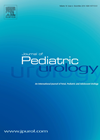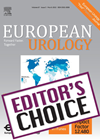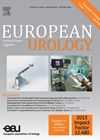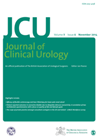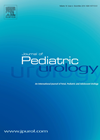
Journal Reviews
Multidisciplinary consensus on the classification of prenatal and postnatal UT dilation classification system
There is a lack of evidence in the literature correlating prenatal and postnatal urinary tract (UT) dilation pathology because classification systems vary, differing descriptive terms are used, and because dilation is a dynamic process and uropathies present a spectrum of...
UTI and VUR in children with mild antenatal hydronephrosis
This paper describes a retrospective analysis of 760 (608 males, 162 females) patients identified with mild antenatal hydronephrosis (defined by an anteroposterior (AP) pelvic diameter of 7-10mm in the third trimester and persistent postnatal dilation) looking at the incidence of...
Performance status may alter outcomes in those treated with abiraterone
The drug therapies available for those with metastatic castrate-resistant prostate cancer have increased over the past few years. Abiraterone, a CYP17 inhibitor, has been proven effective in phase three trials, however those with poor performance status were largely under-represented in...
Impact of case volume on outcomes of ureteroscopy for ureteral stones
With the ever-increasing focus on patient safety, centralisation of services for major procedures is becoming more common. Using data from the Clinical Research Office of the Endourological Society (CROES) Ureteroscopy Global Study database, a prospective observational multicentre study created to...
CRP to predict the need for surgical intervention in acute renal colic
A previous paper has suggested that C-reactive protein (CRP) is a useful serum marker for determining the likelihood of a patient with renal colic requiring surgical intervention, the cut-off level being >28mg/l (specificity 88.9%, sensitivity 75.8%). This prospective observational study...
Efficacy of flexible ureteroscopy and laser lithotripsy for lower pole renal calculi
The management of lower pole renal stones (LPS) is often difficult. Extracorporeal shock wave lithotripsy (ESWL), flexible ureterorenoscopy (fURS) and percutaneous nephrolithotomy (PCNL) are all potential options with potential benefits and disadvantages. In order to assess the success of fURS...
Urology MDTs: what members think
This study aimed to examine the functionality of urology cancer multidisciplinary team meetings (MDTs). Evidence has suggested that urology MDTs are not as well structured as other surgical disciplines. MDT members were asked their views on if there were any...
Paediatric chronic orchalgia
Testicular or scrotal / groin pain is common in children and often there is no apparent cause. This paper describes the authors’ experience over 10 years of boys >10 years seeking medical attention with testicular pain without anatomical abnormality or...
Refluxing ureteral reimplantation
Obstructed megaureters may be managed with temporising stents, cutaneous ureterostomies, or in older children with ureteral reimplantation (usually if the child is over one year of age). Cutaneous ureterostomies have risks of stomal stenosis, infection and leakage problems over nappies...
Buccal grafts for urethroplasty in pre-pubertal boys
Buccal mucosa graft (BMG) is often used as the primary graft in complex hypospadias surgery. It is not clear what the response of this BMG is during puberty androgen surge and whether or not differential penile growth occurs with secondary...
Impact of internal spermatic artery preservation during laparoscopic varicocelectomy
There is still considerable controversy about the optimal surgical treatment of adolescent varicocele. One of the dilemmas is whether or not to preserve the internal spermatic artery (ISA) when carrying out a laparoscopic Palomo procedure. This paper looks at retrospective...
Outcomes of VUR in children with non-neurogenic dysfunction treated with Deflux
The 2010 American Urological Association (AUA) guidelines on primary vesicoureteral reflux (VUR) state that children with VUR and lower urinary tract dysfunction are less likely to have the VUR resolve spontaneously than those with primary VUR alone (31% vs. 61%)....

